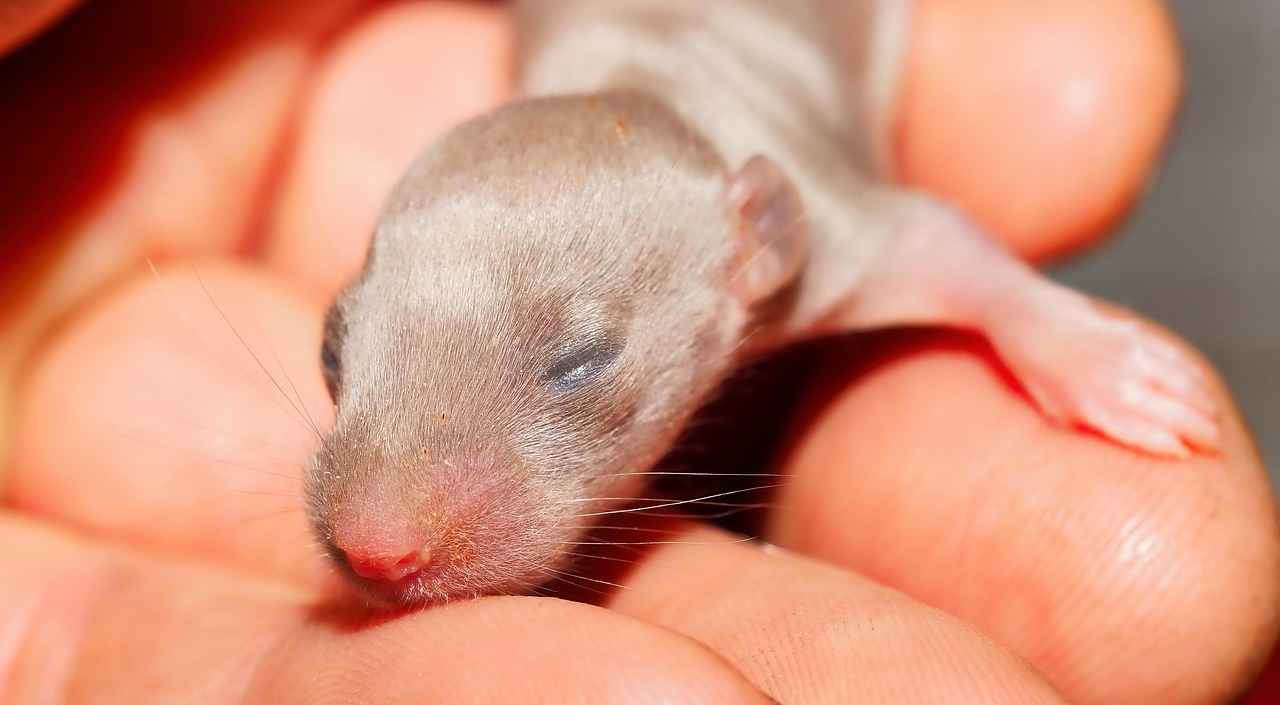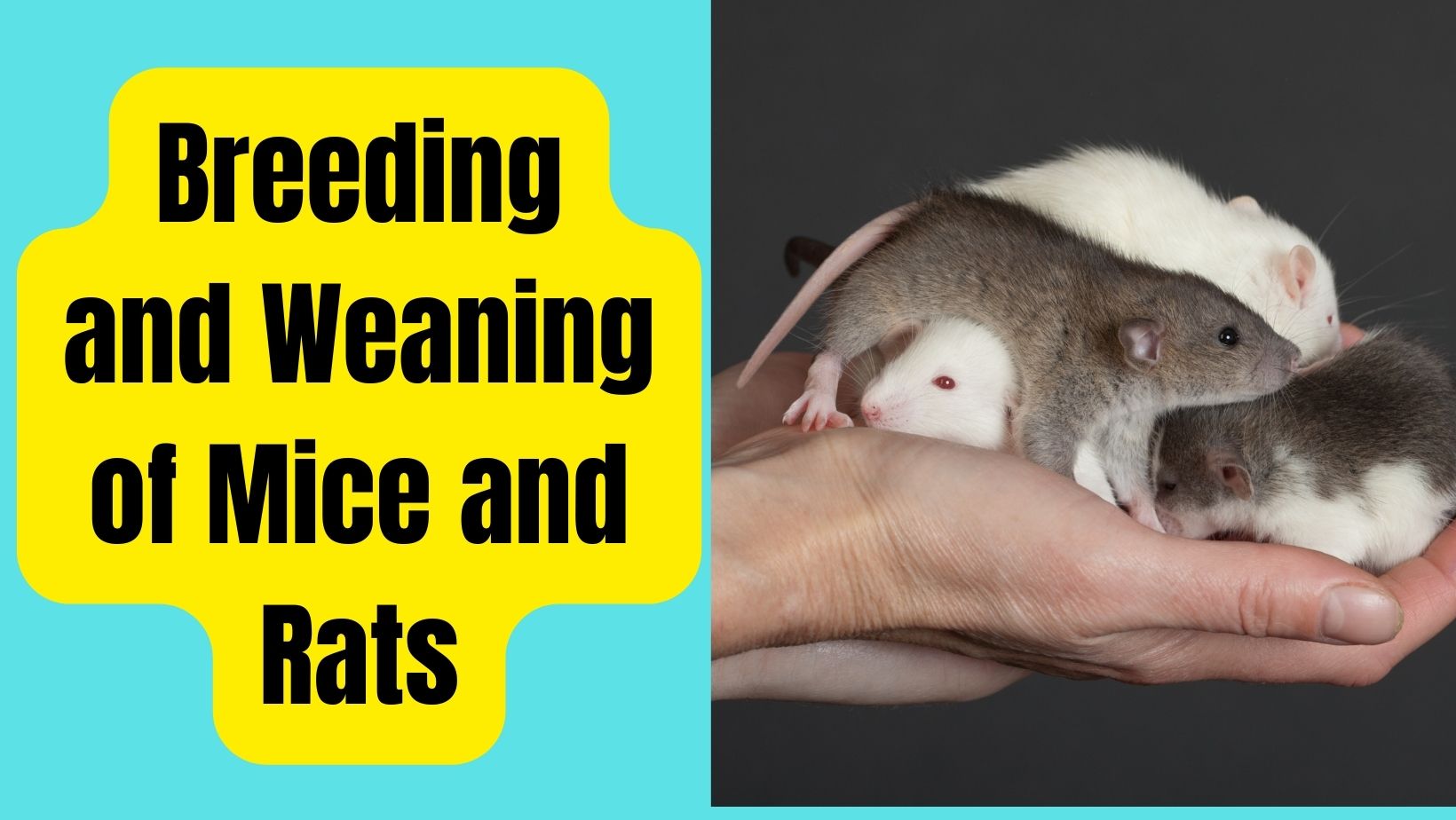When should we start weaning baby rats? What steps should we take to wean baby rats and get them started on lab blocks?
I start weaning baby rats at about 3-4 weeks. You don’t want to wean rats from their mother completely because they will still need to get vital nutrition from her but you should start introducing lab blocks to them gradually.
The majority of the time, you want to start weaning by feeding soft foods to baby rats. Their teeth will probably not be sharp enough to really get into a lab block so you should soften the blocks into a paste.

Weaning Baby Rats
Take some lab blocks and soak them in water to create a mushy paste. Put this in a little container and leave it in their cage for them to eat. You should do this with Harlan Teklad since it has extra protein.
This formula of lab blocks will be okay until 6 months of age. During this period, they should still be having their mother’s milk. Weaning baby rats is a very gradual process.
Other foods you can introduce during weaning are foods such as oatmeal or baby food. There should be no extra ingredients added such as sugars and such.
You can also try making your own by using a blender and using Ensure and blending various fruits/vegetables together. See a list of safe foods for rats.
Start out with just a little bit a day. You don’t want to substitute mother’s milk with mushy food.
Mother’s milk contains some vital nutrition that just isn’t like anything else.
When do you wean your rat pup or mice?
Mice and rats are often kept as pets and live to be about 3-4 years old. Once they reach this age, it is time to wean them from their mother’s milk. Here are some tips for how to successfully ween your mouse or rat pup.
Types of Weaning
When do you wean your rat pup or mice? Weaning is a process of gradually reducing the amount of food and water given to a baby animal until it becomes self-sufficient.
In rats, this usually happens around four to six weeks old. For mice, it typically happens around eight to twelve weeks old. There are a few different methods you can use to wean your rat pup or mouse.
One method is to gradually reduce the food and water given over a period of several days or weeks. You can also offer them smaller portions of food and water throughout the day, instead of giving them one big meal.
Finally, you can let them go completely dry for a period of time and then start giving them small amounts of water again. It’s important to keep an eye on your rat pup or mouse during the weaning process so that they don’t get too hungry or thirsty.
What is the best age to wean your animals?
There is no one answer to this question as different animals will wean at different ages, depending on their natural instincts.
However, the general rule of thumb is that most animals will start to wean around six months old. This is when they are strong enough to handle being away from their mothers and are ready to explore their new world.
When should you consider adopting a new rat pup or mouse?
When it comes to rodent adoption, timing is everything! You may be wondering when you should adopt a new pup or mouse. In general, there are three key stages in a rat’s life: nursing, weaning and growing.
Nursing rats and mice will consume milk from their mother for about six weeks. After that time, the rat or mouse will stop nursing and may start to explore its surroundings.
At this point, it’s generally okay to introduce your new rat or mouse to other rats and mice. However, keep in mind that rats and mice can be territorial, so it’s important to introduce them slowly.
After weaning, rats and mice will increasingly explore their surroundings and start to eat solid food. This is a good time to begin training your new rat or mouse. Be patient with them as they will likely make a lot of mistakes at first. Eventually, they will get the hang of things.
Finally, as rodents grow, they will continue to grow and develop physically and mentally. By this point, you may want to think about moving your new rat or mouse into its own home.
Transitioning to a rodent diet
When you first introduce your rat pup or mice to a rodent diet, it’s important to gradually wean them off of their human food.
You can do this by mixing in a small amount of rodent food each day until they are eating mostly rodent food. Once your rat pup or mice are eating only rodent food, it’s time to transition them to their new diet.
What age do you wean rats?
When do you wean your rat pup or mice? There is no universal answer, as each rodent needs to be nursed and raised differently.
Generally speaking, however, most pet rats are weaned around four to six weeks old. Mice tend to be weaned around two to three months old.
What does it mean to wean a rat?
When you wean a rat pup or mouse, you are gradually reducing the amount of food that they receive. Eventually, they will be able to function on their own without regular meals from you.
What do you feed a weaning baby rat?
When weaning a rat pup or mouse, it is important to provide them with the right food. The first few weeks of their life are crucial for their development, so providing them with the best food possible will help them grow and thrive. Here are some tips on what to feed a weaning baby rat:
– Feed your rat pup or mouse a high-quality diet that is full of nutrients. Make sure to include things like fresh vegetables, fruits, and hay in their diet.
– Offer your rat pup or mouse small amounts of food several times a day instead of one large meal. This will help them get all the nutrients they need and avoid overeating.
– Keep an eye on your rat pup or mouse’s weight and adjust their diet accordingly if necessary. If they start to gain too much weight, reduce the amount of food they’re eating or switch to a low-calorie diet.
What size are weaned rats?
When do you wean your rat pup or mice? Most people start weaning around 8-10 weeks old. Some people do it a little earlier, and some a little later. The general rule is to gradually reduce the number of feedings until the rat pup or mouse is eating only once every two days or so.
Conclusion
If you have a rat pup or mice and you’re thinking about weaning them, there are a few things to keep in mind.
For starters, make sure your rat pup or mouse is ready for the transition – they may be excited at first but eventually, they’ll realize that their mom isn’t around anymore and will start to act out.
Secondly, try to do it gradually – starting with small amounts of food and then moving on to bigger portions over time.
And finally, be patient – it can take up to two weeks for your rat pup or mouse to adjust completely to life without its mother.





Leave a Reply
You must be logged in to post a comment.